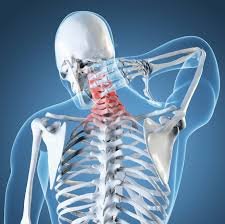Whiplash
Causes
Whiplash is often associated with an injury following a motor vehicle accident, however, similar forces can also be placed on the neck in sports such as football. Whiplash results from trauma to the neck when it is exposed to a rapid and sharp movement of the head in one direction before quickly whipping back. Whiplash occurs to the soft tissues that support the cervical spine (muscles, tendons and ligaments).
.
Signs and Symptoms
The signs and symptoms may not present immediately following the injury, they can often take several hours or days to present. The severity can depend on the speed and type of the accident, the neck position at the time of injury, any underlying spine pathology prior to the injury, and whether or not you were braced/prepared for the injury. This is why the length of time you experience symptoms can be highly variable, ranging from weeks to years.
Symptoms can include:
Muscular pain
Neck joint pain and stiffness
Headaches
Pain in the shoulder or between the shoulder blades
Reduced neck range of motion
Pins and needles, burning or numbness in the arm and/or hand
Dizziness
Ringing in the ears
Blurred vision
Nausea
Irritability, sleep disturbances, fatigue
Difficulty concentrating or remembering
Treatment
Our physiotherapists will be able to identify which structures are the primary source of your symptoms and treat that area . They will then be able to help manage your whiplash and guide you through your recovery. Common techniques to treat whiplash include soft tissue massage, joint mobilization, heat therapy, dry needling, taping, postural re-education and a strength based exercise program. Correcting the ergonomics of your workplace, general fitness, postural re-education and listening also play an important role in your recovery.




